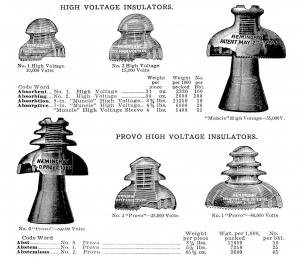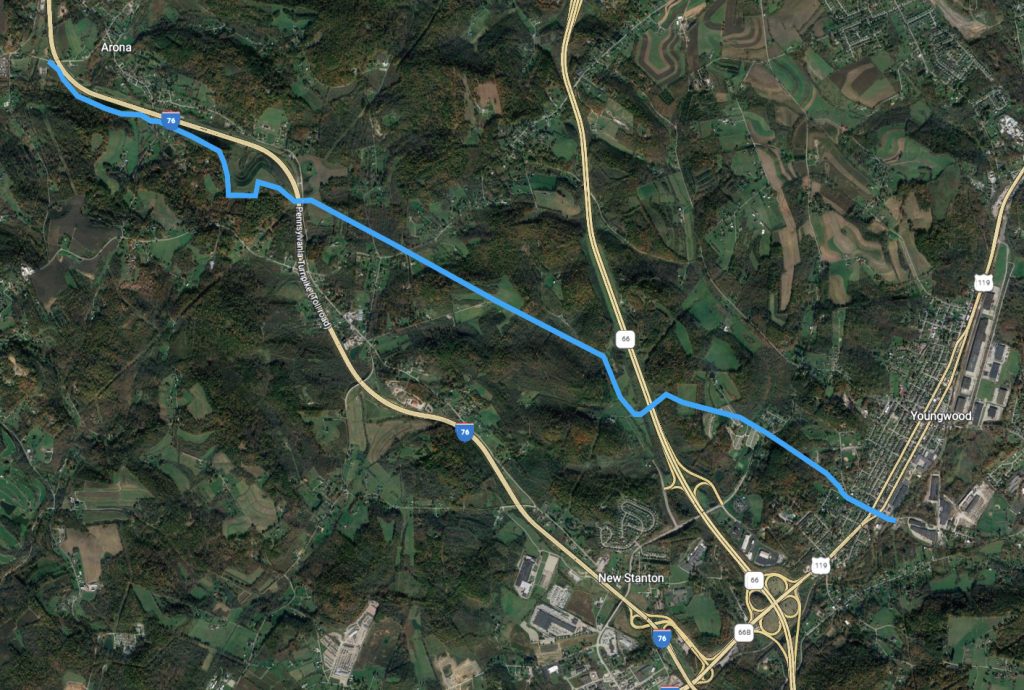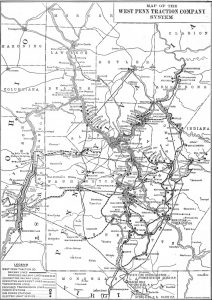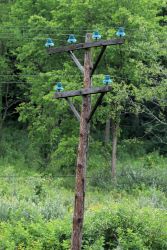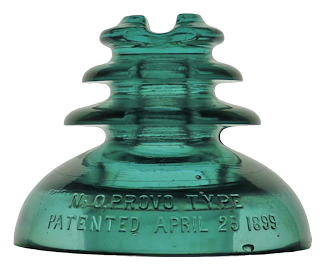
In the hills outside Pittsburgh, PA, between the little towns of Arona and Youngwood, lies an interesting historic relic from the early days of high voltage power transmission. On this short 6 mile stretch of power line are some of last large Hemingray glass power insulators in the air anywhere and the only place you can see the very unique No. 0 Provo type. Sure, there’s smaller Hemingray and other glass still out there, and a good number of clear Pyrex pieces still in service, but there’s just something uniquely beautiful about these massive aqua glass pieces.
So what’s a No. 0 Provo, anyway? For that we need to learn a bit about the early history of AC power transmission in the USA and about a man by the name of Vernon G. Converse.
The story of the Provo insulator actually starts pretty close to home, at least for me. The first high voltage AC power plant and transmission line was constructed by LL Nunn near Ophir, CO. It ran from the Ames hydroelectric plant to the Gold King Mill, a distance of about 2.6 miles. The line was a single phase energized at 3kV at 133Hz. It connected a generator directly to the motor at the mill, with no power transformers in between – just simple plug switches that would draw a terrifying arc when the operator had to disconnect the load. This original line consisted of “standard Western Union crossarms and insulators” carrying two No. 3 copper conductors. These insulators would have likely been CD 126s or 127s – definitely not rated for 3kV! – but apparently they worked well enough for the time.
Shortly after this initial success, Nunn decided that in order to start providing his electrical services to other mines, the system voltage would need to be raised in order to transmit power further. In order to see what the optimal voltage might be, and what sort of line construction would be needed to support such voltages, Nunn had Westinghouse send engineers to run a series of tests. Three experts in the emerging field of high voltage AC power transmission were brought to Telluride – Charles F. Scott (Westinghouse chief engineer), Vernon G. Converse (Westinghouse design engineer), and Ralph D. Mershon. Experiments in 1895 lead the group to believe that 40kV was optimal for transmission given the technology of the age.
Converse’s involvement with these early high voltage AC tests lead him to design an insulator that he felt would be optimal for his new 40kV lines. We know this today as the No. 1 Provo Type – CD 283. This insulator was developed to support Nunn’s next endeavor – a hydroelectric plant on the Provo River (located northeast of Orem, UT, along what today is US 189) that would send power to the mines at Mercur, Utah. The plant and lines were installed in 1897, and went into operation in early 1898. These insulators were found to work well, and their use was quickly expanded to hundreds of miles of line stretching across Colorado & Utah, as well as scattered use in Oregon, New Mexico, and Ohio.
Smaller No. 2 “Provo Type” insulators – CD 282 – were also created around the same time for lower voltage distribution lines and used in many of the same areas.
The No. 0 Provo Design
Hemingray’s “No. 0 Provo Type” was likely the last of the production-model Provo type insulators to be introduced, likely around 1903. It was the largest of Converse’s “Provo” type insulators, and as such was rated at 50kV. The No. 1 and No. 2 would have been created around 1897-1898 based on contemporary literature and advertising. The earliest that the No. 0 appears Hemingray ads or catalogs is 1903. Since the No. 1 was rated at 40kV and the No. 2 at 25kV, this new monster became the No. 0 to keep the numbers in order from largest to smallest. Unlike the other Provo-type production models, it had a saddle groove top to support larger conductors.
What’s interesting is that these new No. 0s were very similarly rated to the “Gerry Insulators” that Hemingray had already been manufacturing for several years before the No. 0 was introduced. The “Gerry Insulators” – known as the CD 303 “Muncie Type” to collectors today – were created by M.H. Gerry, Jr., chief engineer of the Missouri River Power Company (later Montana Power). They were used to support the two 55-60kV circuits between Canyon Ferry Dam and Butte initially, and were in service by 1898. Hemingray sold both the No. 0 Provo and the Muncie type at the same time (~1903-1910), and in fact advertised the No. 0 Provo using the Gerry insulator pin sleeve. (No Provo 0s have ever been found in actual use with a Gerry sleeve, however.) It’s a bit of a mystery why Hemingray offered these two extremely similar high voltage designs at the same time, but they may have just been catering to different customers’ preferences.
The success of the two models couldn’t be more starkly different, however. Muncies were used by the tens of thousands throughout Montana with some applications elsewhere. They were a highly successful design both technically and commercially, being in production from 1898 through at least 1922, and continued in service for over a century on some lines. The No. 0 Provo Type appeared in Hemingray ads in early 1903 and disappeared by 1911, and is only known to have been used on two short lines in Pennsylvania, and tested on the high voltage Kern Valley Test Line in California. (Only a shard has been found of any used on the Kern Valley line.) The two smaller Provo types and the Muncies continued to be marketed for nearly a decade after the No. 0 disappeared. Bob Stahr, one of the hobby’s premiere Hemingray historians, puts the production number at only about 5,000 No. 0 Provo units total.
(There was, of course, the experimental No. 4 Provo Type. Well, there was exactly one – a prototype found in the Hemingray dump in the 1960s. Eventually it wound up in Butch Haltman’s collection, and was stolen in Albuquerque in 2008. It will likely never be seen again. It may have been an early version of the No. 0, or a later development in the series – nobody knows. Also, if there’s a 0, 1, 2 and 4, was there ever a No. 3 Provo type?)
The Last No. 0 Provos In Service
Despite the insulator not being a commercial success, Converse and his No. 0 Provo might get the last laugh after all. There are no more complete Muncie types still in service today. The last ones were removed around 2010. (There are a few Muncie-type tops still in service around Townsend, MT.) There are, however, a small number of Provo 0s remain in regular utility service to this day on one short stretch of line in Pennsylvania.
The line was part of West Penn Traction & Water Power Company’s 22kV transmission system (later apparently uprated to 25kV), and was present on the earliest maps I could find, published in 1911. The best quality map is from McGraw Electric Railway Manual p. 279 in 1914, courtesy Wikipedia and reproduced to the right. The line originally ran from the Youngwood substation northwest to Arona and then on to Versailles and Douglas. It connected to a north-south line that ran to the company’s power sources (the main coal-fired plant at Gibson, Garretts Run, Butler, and a hydro station on the Cheat River in WV). There was also another branch from Youngwood over to beyond Latrobe.
Street Railway Review, volume XV, from April 15, 1905 is a goldmine on how this line came to be. It states that the railroad’s transmission lines were built as double circuits, one for 25Hz railway power and one for 60Hz lighting power. Best yet, it explicitly states that the insulators in use are Provo 0 types, arranging the conductors as two inverted equilateral triangles, 36″ on a side. There’s even a picture of a trolley and a part of the transmission line, showing identical pole construction and a full load of twelve big Provos!
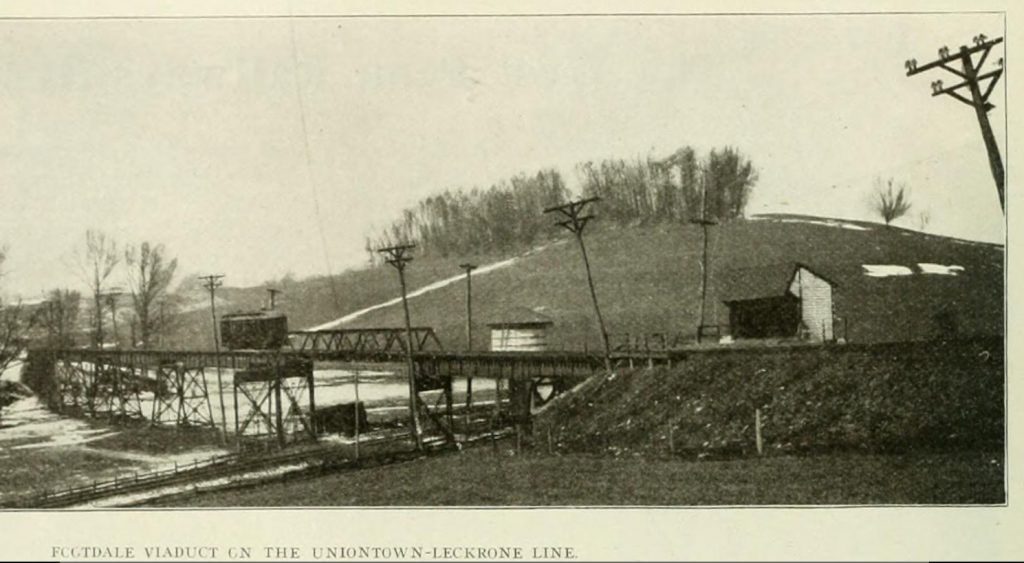
The article indicates that there were 45 miles of line connecting the various substations in 1905, and poles were spaced 100ft apart. If they were all Provo 0s, that would mean there would be a minimum of 14000 Provo 0s produced, not accounting for double crossarm poles which seem to be common given the hilly and curvy nature of the system.
The Engineering Record, Volume 48 Number 10 of September 5, 1903, page 268 corroborates their usage. In a discussion of the new 6MW power plant built for the Pittsburg, McKeesport & Connellsville Railway (but sold to the West Penn Railway & Lighting Company), it describes the transmission lines nearly identically – 25Hz and 60Hz on the same poles, carried by “Hemingray No. 0 Provo type” insulators.
Eventually the railroad and the electric systems were split apart in 1916. The railroad went on to absorb other local interurban systems and become the West Penn Railway System, and the power company became West Penn Power.
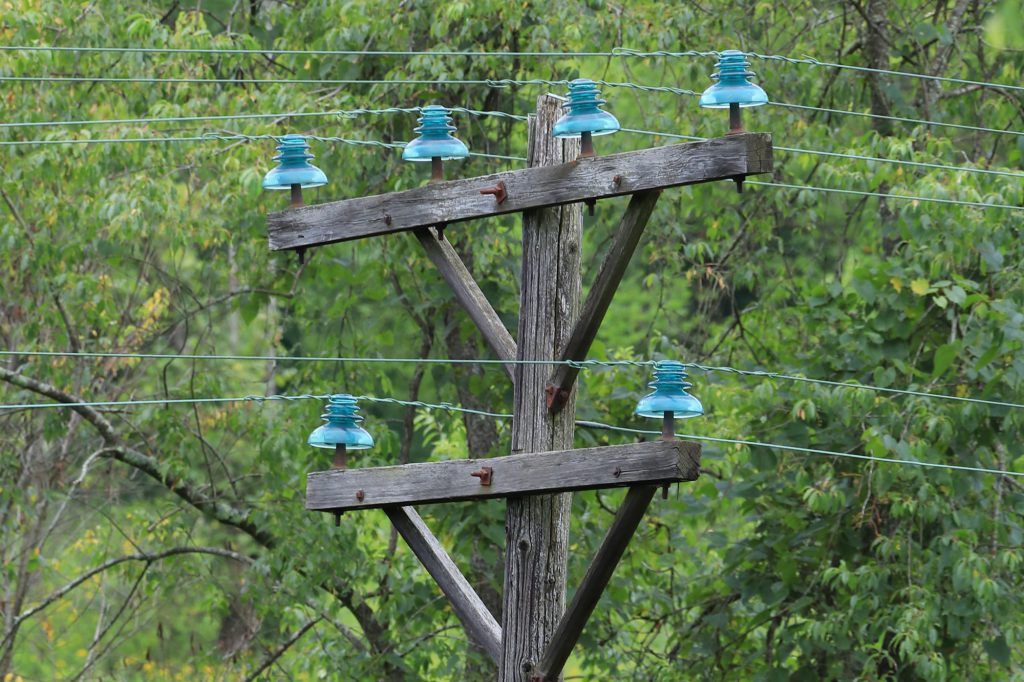
I have no facts about why the Provos just survived on the section between Youngwood and Arona and not on any of the other connecting 25kV transmission lines. Pictures of the West Penn Railways cars in the 1940s and early 1950s show that many of the lines had been changed over to porcelain even by that era.
I do have guesses, however. The line from Youngwood over to Verseilles (effectively McKeesport) would have moved power from the thermal plants at Connellsville/Gibson, Garretts Run, and Butler as well as the Cheat River hydro facility to the McKeesport area. By 1920, maps show the West Penn Power Company had 66kV and 132kV lines running in from Ohio, delivering power from the west to Pittsburg and the industry along the river valleys, as well as feeding power into the 25kV system from the other direction. The Youngwood-Verseilles line would have become less important, since little power would flow west from the older, smaller eastern stations over the 25kV network. However, the north-south 25kV lines would have still served as the primary transmission system, and would have been upgraded as more load came online. As they were upgraded, more modern insulators would likely have been installed as new larger conductors were strung.
What support do I have of this theory? The line no longer runs its entire length – it truncates about five miles beyond Arona. The side of the line that I’m guessing was 25Hz railway power is now just insulated with small pin types in many places that are probably only good for 8-11kV, and is tapped to transformers for individual customers. The side that’s still insulated for higher voltages is still small copper conductors – likely original – and clearly haven’t been upgraded for heavier load. If the line’s purpose shifted from end-to-end transmission to just local distribution, it would follow that there was never enough justification to install heavier conductors and newer insulators.
That’s all speculation, however. The important part of us electrical history nerds is that on this one tiny little stretch of power line, big Hemingray glass can still be seen just as it was installed ~115 years ago.
As recently as 15 years ago, you could still see the big glass insulators on the line from the Pennsylvania Turnpike, but many of these sections have now been upgraded with modern poles and porcelain insulators. (I saw them many times when working in Pittsburgh, but stupidly I never stopped to photograph them.) One circuit is still insulated as if it carries ~25kV, but the other uses much smaller pin-type insulators as replacements, and is likely only a 8 or 11kV circuit now.
The line travels largely cross-country, not particularly paralleling any roads, but if you know where to look there are still places you can see these big glass beauties in service. Since I was headed east to Gettysburg for this year’s national insulator show, I decided it was time to stop and capture some big glass while it was still in service.
The line starts at a substation just east of Sewickley Creek on Hillis St. in Youngwood, PA, and proceeds northwest up the hill along Hillis. This is by far the easiest place to see a large number of these insulators in service. Hillis St. ends and the line goes through a few back yards and then straight over the ridge, but can be seen again on the other side at the Fox Den Acres campgrounds. From there, the line again disappears into private property, and is diverted from its original path to cross Pennsylvania Route 66 at a nice perpendicular angle.
The largest concentration of original construction poles and Provos can be seen on Shrader Hollow Road, on the west side of Penn 66. They’re in private property, but you can get a pretty good look at them from the road if you bring some binoculars or a big telephoto. The line pops up to the top of the ridge and down the other side, roughly following Henry Road. In talking to one of the locals, apparently the poles on top of the ridge still had Provos until this past winter, when a storm came through and broke some of the crossarms. He wanted to get one of them, but the crews just dropped them to the ground in their efforts to get the line repaired and the power back on.
The last visible Provos on the line are where it crosses Middletown Road. From there to the west, it’s all either been replaced by more modern insulators or just been completely rebuilt with modern construction.
So here you go, a selection of photos from what’s left of the Provo 0s in the summer of 2022. Not bad for insulators made nearly 120 years ago.
This work is copyright 2024 by Nathan D. Holmes, but all text and images are licensed and reusable under a Creative Commons Attribution-NonCommercial-ShareAlike license. Basically you’re welcome to use any of this as long as it’s not for commercial purposes, you credit me as the source, and you share any derivative works under the same license. I’d encourage others to consider similar licenses for their works.
